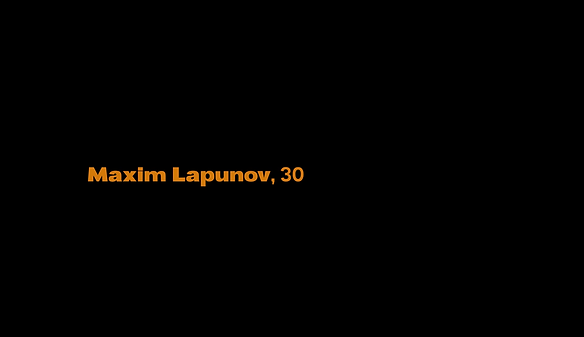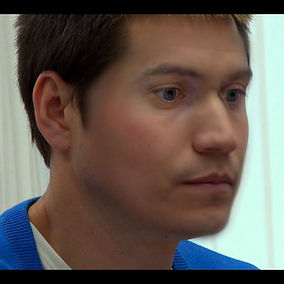About the Author

This website represents the culmination of my time at the University of Texas at Austin receiving my Masters in Media Studies.
I first began to take an interest in machine-human interactions and relationships in Dr. Sharon Strover's "Communication, Technology, and Culture" class, where I was first introduced to the digital influencer Lil Miquela. Miquela was the start of my thinking about the ways that we integrate machines and technology into our daily lives. In following this line of enquiry, I found myself contemplating the way that in taking a recuperative stance toward technology, and in looking at our images of machines and tech through a queer lens, can reveal new modes of being in the world. I found myself transfixed by the ways that these creations are frequently the backdrop that allow humans a way to imagine a different world and a different self. More often than not, these imaginings take on a distinctly counter-hegemonic sensibility.
Halfway through “Communication, Technology, and Culture” (Spring 2020), the COVID-19 pandemic forced us into remote online courses. I’m writing this section on the one-year anniversary of the World Health Organization declaring a worldwide pandemic. Since then, I’ve completed the majority of my Masters remotely.

Unveiling the Queer
Maxim reclaims his name and his face
Through deepfakes, Welcome to Chechnya complicates what it means to “conceal queerness.” One of the survivors, “Grisha,” decides to reveal his identity so he can go on record against the Chechen government. “Grisha” holds a press conference and reveals himself to be Maxim Lapunov, a refugee who had spent 12 days in a Chechen prison. As the mic is given to Lapunov, in a visually arresting moment, the deepfake that was previously protecting his identity, fades from his face and the audience is greeted with the unaltered face of a man who
survived the Gay Purge. This scene is stunning in its artistry. First revealed is Lapunov’s striking blue eyes. He glances around at the press conference attendees, his face suddenly rounder, and mouth set in a line. As he raises the mic to speak, the scene cuts to black and we are introduced to his true name and age.

Deepfakes and Identity
This moment is the culmination of deepfakes as a queer strategy. Welcome to Chechnya utilizes deepfakes to not only counter state control and protect queer people in Chechnya, but to also get at the nature of identity itself. Maxim’s “unveiling” is a vehicle for questioning clarity and reality, prompting the audience to question the importance of visual markers. Similar to how Judith Butler’s book, Gender Trouble, examines how gender is constructed, performed, and ultimately, taken as something concrete and real, Welcome to Chechnya forces viewers to consider the ways that identity is taken for something that is concrete and “real.” The documentary also highlights how identity (both physical and sexual) plays into state control of bodies. Widely thought of as naturalized knowledge, gender and identity, are societally constructed and ”based on a series of cultural inferences” (Butler xxii). In the same manner that Butler questions the “mechanism of this construction” (11), Welcome to Chechnya prompts the audience to think about the construction and effect of deepfakes. Butler asserts that society forces identity and gender performance, and along with Foucault, argues that concepts of gender and identity are ultimately used to normalize and assert control over populations.
Welcome to Chechnya complicates this framework, as neither the men nor the women are viewed as persons in the eyes of the Republic. Their queerness, a deviation from Chechnya’s hyper-masculine norm, does not constitute an “intelligible life” in the eyes of the Chechen government (xxii). In the way that typical gender-signifiers like body hair, hairstyles, movements, inflections, and clothes can be used to conform to conceptions of a gender identity or subvert it, the deepfakes in Welcome to Chechnya perform in a similar fashion.




“Who devises the protocols of “clarity” and whose interests do they serve? What is foreclosed by the insistence on parochial standards of transparency as requisite for all communication? What does “transparency” keep obscure?”
-Judith Butler, Gender Trouble, xix
Illuminating and Concealing Queerness
The deepfakes allow for multiple layers of comprehension and queerness to shine through as mediated by the documentary. Obviously, at the time of filming the survivors have nothing to protect their identity. But they are marked as different from other Chechen citizens because they are in actual physical hiding, as well as the subject of the documentary. As the documentary was edited and deepfakes added in post-production, the survivors are marked and understood differently by the audience. The deepfakes perform a dual function; they allow for the survivors to be intelligible to the audience, while simultaneously rendering them unintelligible to the Republic. The deepfakes allow for a “coherence...among sex, gender, sexual practice, and desire” (25). France’s use of deepfakes both subverts this intelligibility and brings it into being, allowing the Chechen survivors to be both seen and concealed.
The moment of Maxim’s unveiling is so impactful because it is the moment he accepts the full danger of revealing himself and confronting the Chechen government. The audience is able to see the deterioration of the deepfake and the revealing of Lapunov’s true face, immediately bringing the artifice of his previous face into focus. In a visual sense, the deepfakes act as protection for queer people in the documentary. They protect the survivors’ identity so that government forces are unable to track them. However, deepfakes complicate these notions of “hiding” and “passing” as the survivors are only allowed the freedom to be queer without heightened threats of danger when their faces are swapped with others. The unveiling of Maxim’s identity is a transgressive moment because it is a visual representation of the risk he is automatically assuming in revealing his identity and pursuing a case against Kadyrov and the Republic. His fictive appearance allowed for his lived experience to be conveyed to the audience. By dropping the deepfake, Maxim has swapped the ability to safely share his experiences, and instead reveals himself to the Chechen government while simultaneously becoming unintelligible as a man in the eyes of the Chechen government. The audience is uncomfortably aware of the fact that he is no longer safe.
Thinking Onward: In Welcome to Chechnya, deepfakes are used to protect the identity of queer Chechen survivors. What methods do we use in our daily lives to conceal aspects of ourselves? What does it mean when we reveal ourselves?
Tweet your thoughts and include #QueerHMrelations




